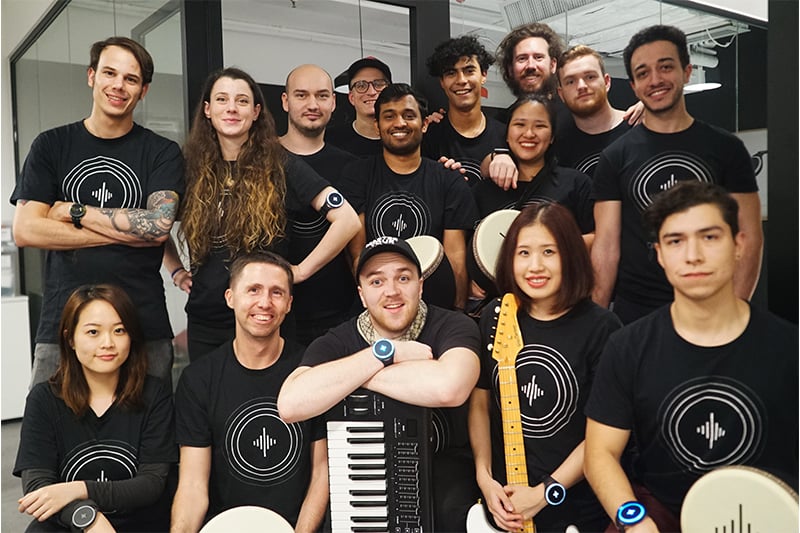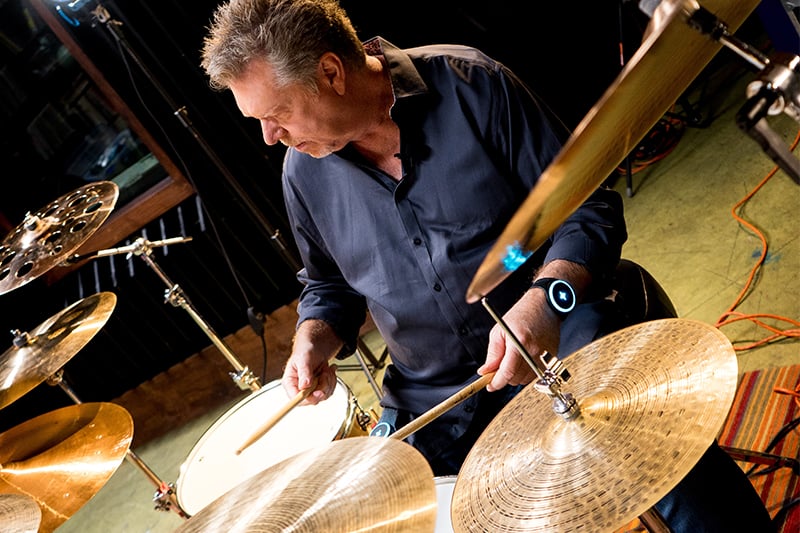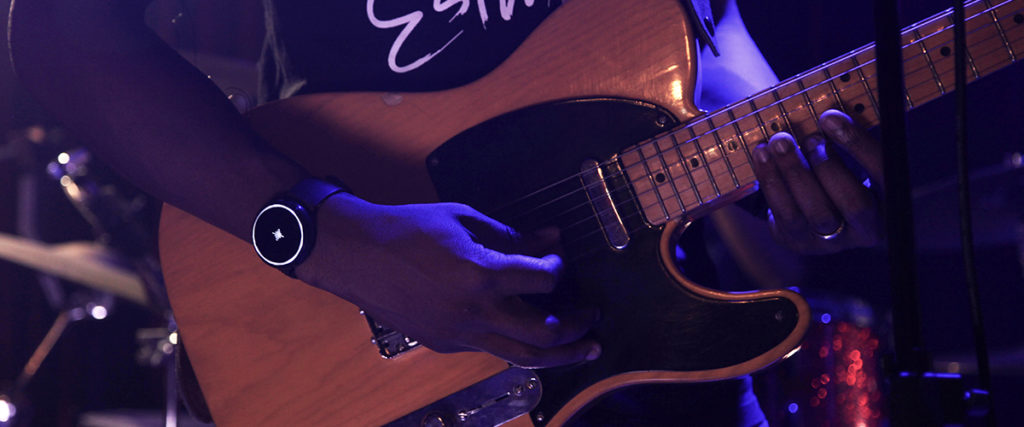Wearables startup Soundbrenner doesn’t just make a cool gadget. They’re trying to change the way we learn. How? CEO and co-founder of Soundbrenner Florian Simmendinger gives his take.
Metronomes may not strike you as the very latest apparatus of musical gimmicks, but Hong Kong-Berlin-based startup Soundbrenner begs to differ. Having raised over USD 2 million in three seed funding rounds, they’ve developed a wearable with all the essential musical tools needed to help improve your musical abilities – designed to be worn on your wrist, arm, leg, or even chest. A sleek looking watch that’s actually a metronome, tuner and decibel meter all in one, they’ve sold over 80,000 wearables in 40+ countries and have over 600,000 users signed up on their app so far. Read on to hear their story.

It took all of 14 minutes for Soundbrenner to hit full funding for their latest release The Soundbrenner Core on Kickstarter. A 4-in-1 wearable, it’s a modern metronome that looks like a smartwatch and comes in both a regular edition and a sophisticated stainless steel version. The product’s most distinctive function is its vibrating metronome, which produces vibrations seven times more powerful than the average smartphone. Just set the beat you want on the app or on the watch itself and feel the beat thrum through you as you play. For those playing in a group, it’s possible to sync multiple Soundbrenner devices together via the app to ensure you’re all playing to the same beat. The detachable device can also be attached to any instrument to act as a tuner or decibel counter, as well as providing more traditional smartwatch functions such as the time and date. Already, The Core has brought in USD 1 million in pre-orders in its quest to transform the way we learn music.
The initial development process started thanks to a personal need. “When we were making music on our own, there weren’t any great technology companies, pretty much until today,” says Florian Simmendinger, CEO & co-founder. “You could see a transformation happening in other spaces, say fitness, for example, but not in music.” Together with co-founder Julian Vogels, the entrepreneurial duo bootstrapped the company, pouring a combined USD 1,000 into prototyping. “We built about 10-15 versions of our first product [The Pulse] by ourselves. They were really ugly, but they worked right. That allowed us to understand exactly what the product needed to be.” This led to their expansion from Berlin to Hong Kong in 2014, allowing them to be closer to their supply chain in Shenzhen.
You might also like Wearable Tech For Better Health

Around the same time, Brinc, a Hong Kong-based accelerator (which has invested in DJI, Journey Foods, and Watr), offered them USD 25,000 in seed funding. The Soundbrenner duo used that to pay an industrial design studio for a good looking product. “We were ready in about a year and three months because product development is so much faster [in Hong Kong].” Once they were ready, they maximised on interest via crowdfunding on Indiegogo. “You can test the value proposition of your product in advance by asking people to sign up to a pre-launch email list. If you can get tens of thousands of people to do that, you have a good chance of selling your product successfully.” The Pulse raised USD 239,079 by 2,367 backers in 2015, and in 2018 The Core raised twice that amount.
Soundbrenner has a large following of artists and creatives who have backed them from the get-go. Jerry Robinson, a legendary drummer who also recorded for Michael Jackson and Quincy Jones, is a part of their ‘Soundbrenner Artist Family.’ But, a quick scroll through Instagram will tell you that a majority of their users are actually people from all walks of life. “Over a billion people try to learn music and more than 90% give up within a year,” says Florian of their huge potential market.

Soundbrenner is currently working on a product that enhances ‘practice motivation,’ which speaks to their ability to take on challenging problems and cater to their users on a more personal level. Florian predicts that wearables are set to become a day-to-day staple in our lives. “I think computing has always shown the trend to get more personal. We are allowing musicians to bring their most important tools with them wherever they go. We are only at 1% of our potential. Almost everyone wants to be a musician. Almost nobody succeeds. So our goal as a company is to bring that change to the world.”
Related Articles
ili: The Ultimate Instant Translator
The Japanese Pet Robot Lovot That Will Make You Happier
HK Tech Startup Platysens Talks About The Future of Wearables





